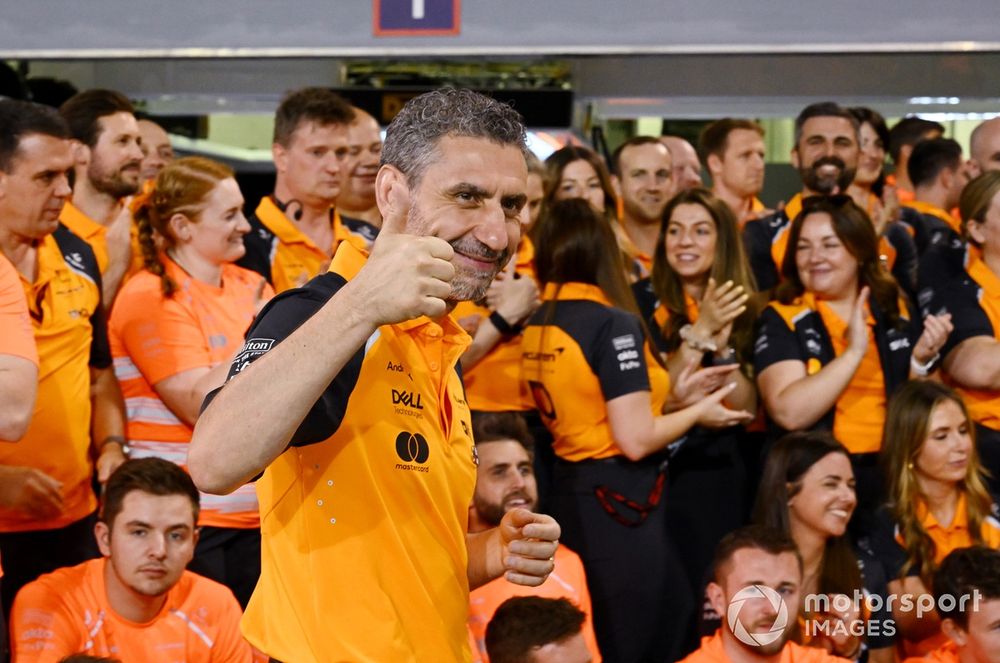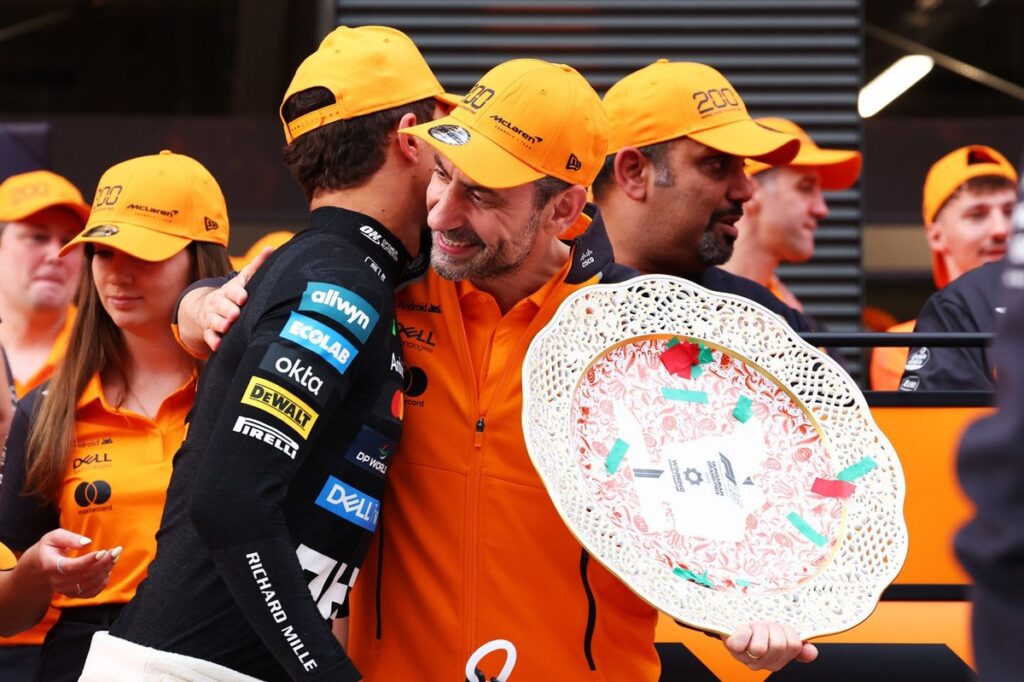From the outside, Andrea Stella’s tenure as a McLaren team boss has looked pretty straightforward.
After taking over from Andreas Seidl ahead of the 2023 season, the Italian oversaw a technical restructuring that turned the team into a regular podium finisher over the second half of a Red Bull-dominated campaign, and then the next major step in May 2024 saw it become F1’s most consistently competitive team ever since. A first constructors’ crown in 2024 followed, and back-to-back titles are now all but guaranteed after the papaya squad claimed 11 out of this season’s first 14 grands prix.
It is no overstatement, then, to call Stella – trusted by CEO Zak Brown – the architect of McLaren’s renaissance. Obviously, McLaren’s trajectory since December 2022 wasn’t as straightforward as it looked on the outside, and Stella had to make difficult decisions too. But the 54-year-old Italian has never been one to demand credit for the team’s success.
“Well, first of all, I came onboard, but I’ve never led alone,” he said as he sat down for a chat with Autosport at the Hungarian Grand Prix. “Zak and I, we’ve always been pretty much working in unison, very connected, and then we created around us a group of leaders with whom we are very united.
“There’s nothing in this business that you do alone, even when it comes to the difficult decisions or analysing the team to understand how you should improve it. Where are the areas that should be consolidated and, if anything, strengthened? And where are the areas where you need a little bit of a revolution, because otherwise we are never going to get where we want – or not fast enough?
“This has always been teamwork, obviously, it’s not too wide a team, but Zak and I are very well supported from a people analysis and technical point of view.”
Andrea Stella, McLaren, Zak Brown, McLaren
Photo by: Andy Hone / Motorsport Images
‘People who don’t have collaborative attributes are simply not at the table’
Stella’s first order of action was to implement a three-pronged structure with different technical directors for each key performance pillar, which was further refined in April and May last year following David Sanchez’s departure.
Neil Houldey became the team’s technical director of engineering, with Mark Temple promoted to the performance TD role and Peter Prodromou heading up aerodynamics. Those changes freed up key Red Bull capture Rob Marshall to focus on his role as chief designer.
Marshall and Prodromou are two good examples of what Stella felt McLaren needed to get back to the top: identifying and hiring key difference makers from its rivals in the case of Marshall, while also empowering some of McLaren’s finest existing engineering minds who had perhaps become marginalised or underutilised in previous, more vertical structures. That flatter structure also required buy-in for its leaders and the ability to make decisions as a collective.
“The first step was to look at the team with a map, and understand what is world championship material and what is not,” explained Stella. “But also, to identify who are the key leaders that will have to lead their own areas. And the final bit was believing in a model based on collaboration.
“I still remember when we announced that we were going from one to three technical directors, there were so many questions about who makes the decisions. For me, who makes the decisions has never been a problem, because my normal way of looking at things is so collaborative that who doesn’t have those kinds of attributes is just not, simply, at the table in the first place.
“Decisions normally tend to be just a critical mass of information accumulated, rather than having a dictator that at some stage will make a decision. Zak and I believed that this is possible. And since then we have added Rob Marshall, which is then a fourth TD, and the dynamics have not changed.
“But the cultural foundation and behavioural attributes should never degrade, otherwise this model starts to suffer. So, it requires a lot of a lot of presence, a lot of understanding of what’s going on in the business to protect this way of working.
“It’s the human interactions that give real meaning to what we achieve.”

Andrea Stella, McLaren
Photo by: Mark Sutton / Motorsport Images
Despite his modesty there is plenty Stella can take pride in over the past two and a half seasons. When asked what the most satisfying aspect of leading McLaren to a world title has been, he said he could give “1000 different answers and all of them would be valid”, but eventually he landed on the way he has been able to make every single part of the 1000+ team part of its journey.
“Definitely, contributing to bringing a championship to McLaren has been one of the highlights,” he said. “Not only in the sense of the legacy of the McLaren Formula 1 team, which is obviously overwhelming as to how prestigious and gratifying this may be, but I also think of the 1000 people and the way this has been celebrated.
“I’ve won many championships [at Ferrari, as a performance engineer], but for this one everyone was just so happy, because I think everyone felt: ‘That’s something I own, that’s something I earned, that’s something I contributed to, I grew up together with the team.’
“So for me, having helped everyone at McLaren have this sort of feeling and sense of constant progress is what I find most satisfying.
“There is almost more satisfaction in the journey than in the achievement. Ultimately, it’s the human interactions that give the real meaning and sense to what we achieve.”
In this article
Be the first to know and subscribe for real-time news email updates on these topics
Read the full article here

